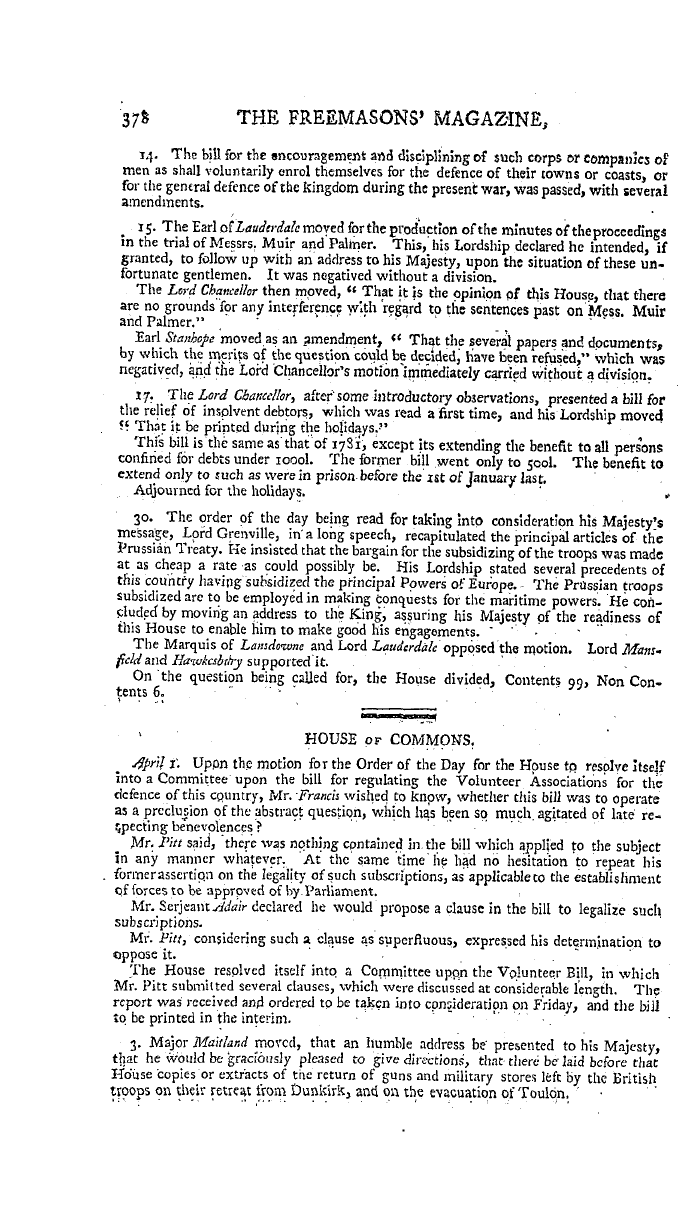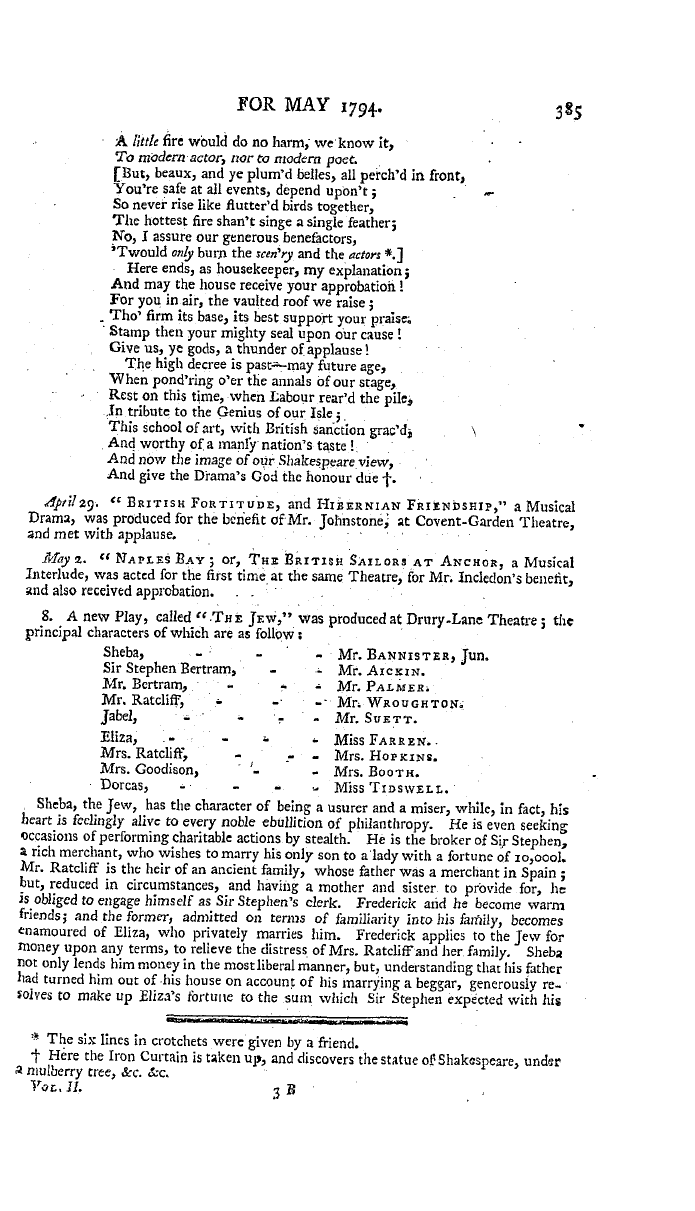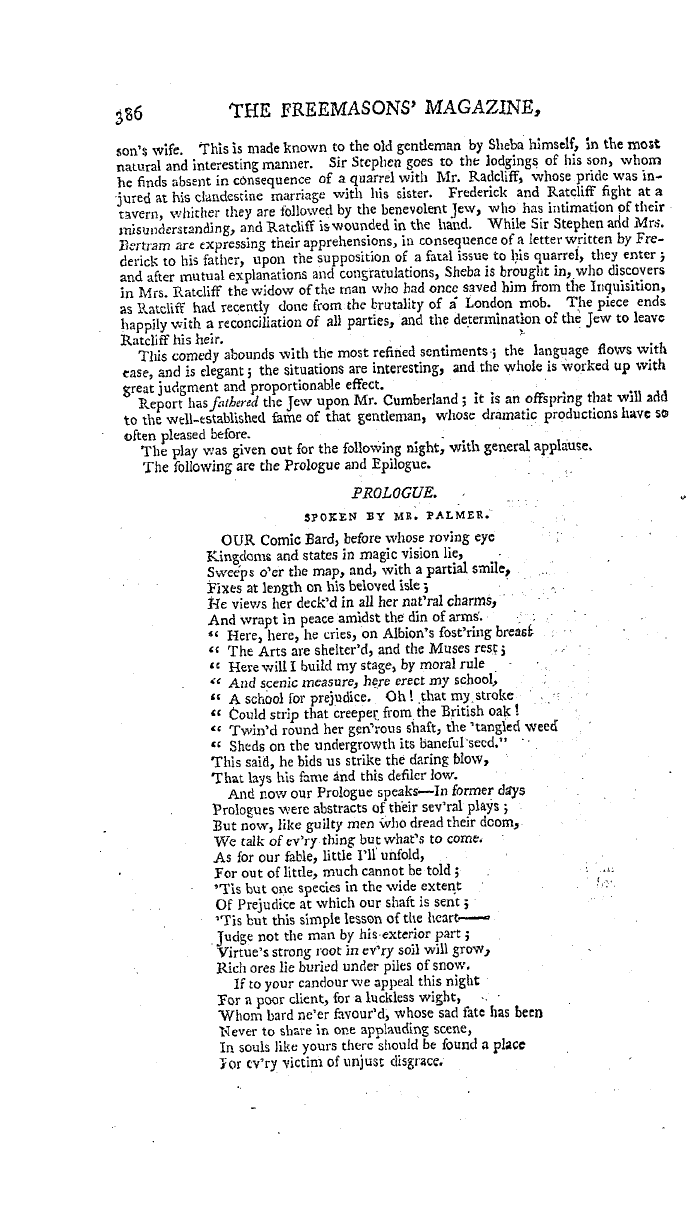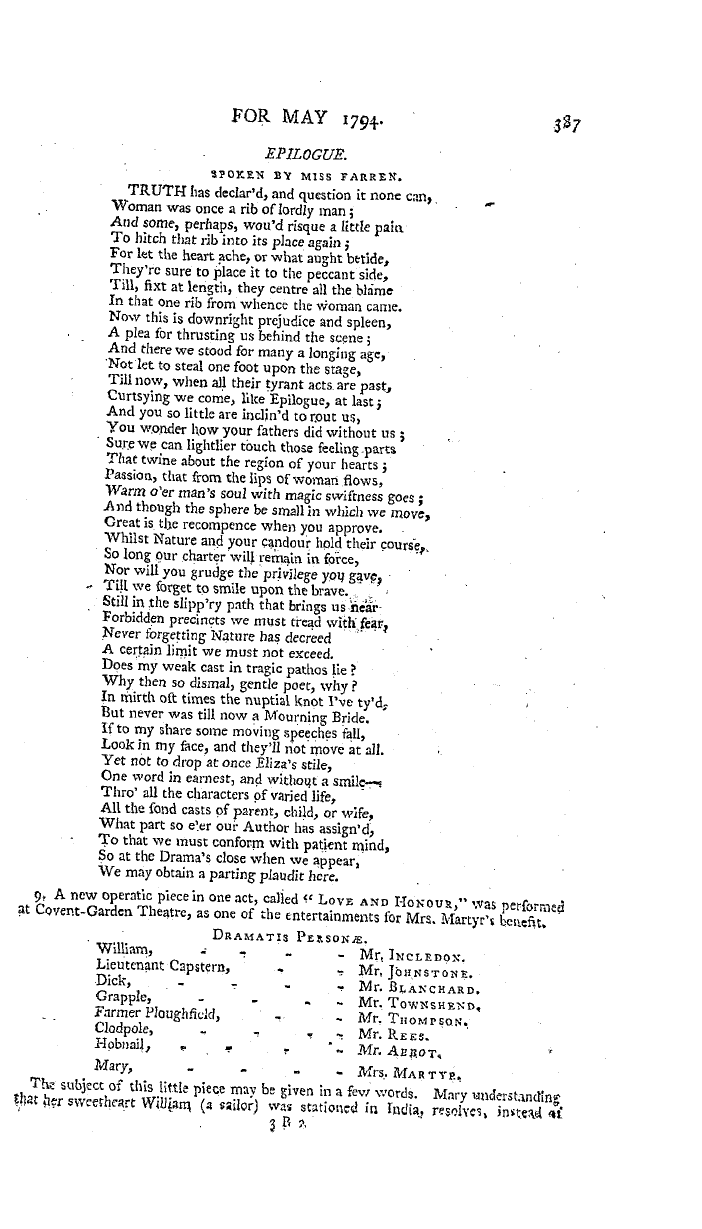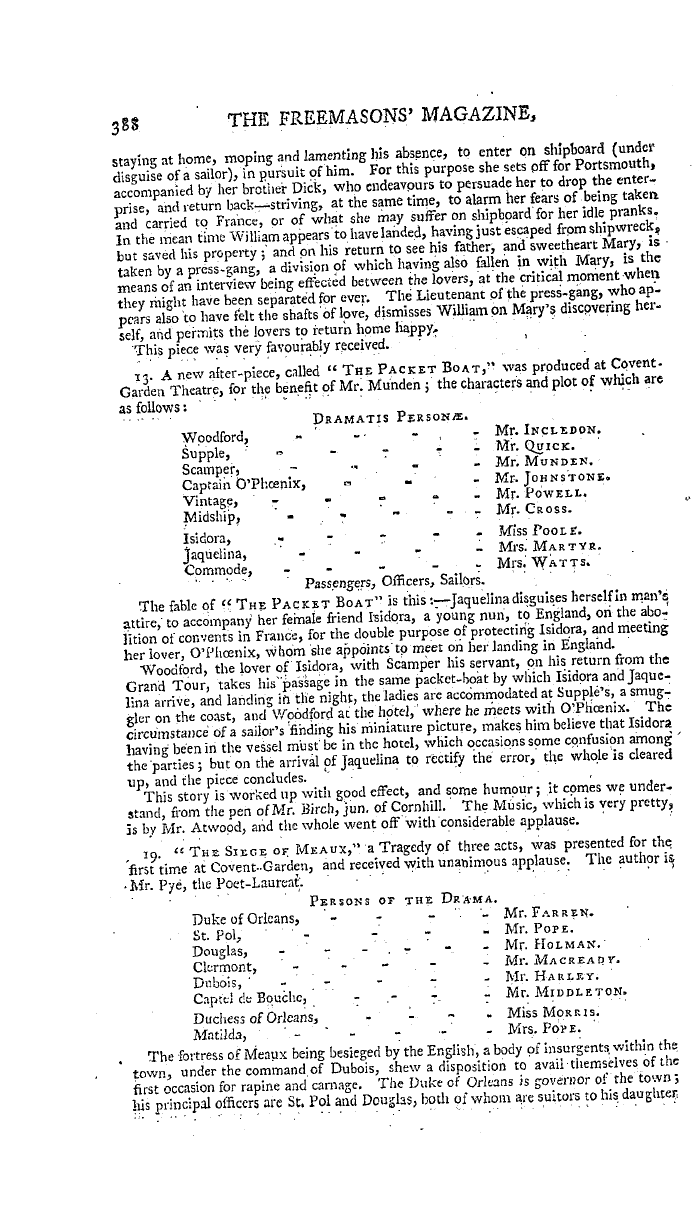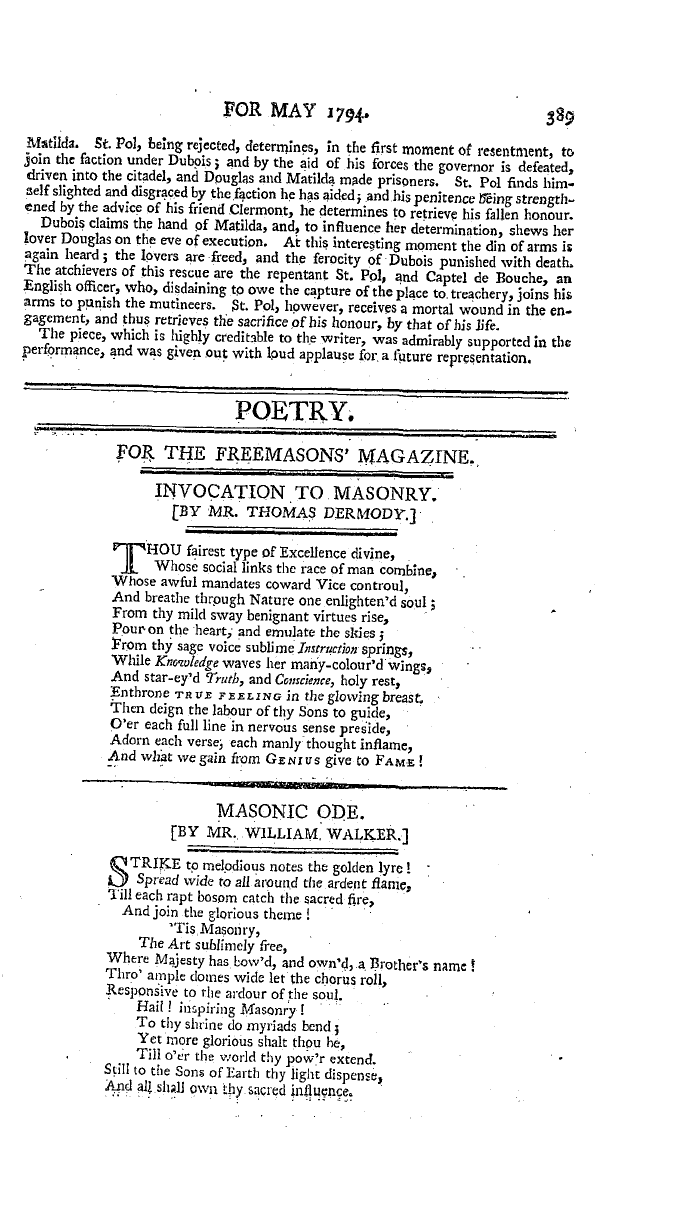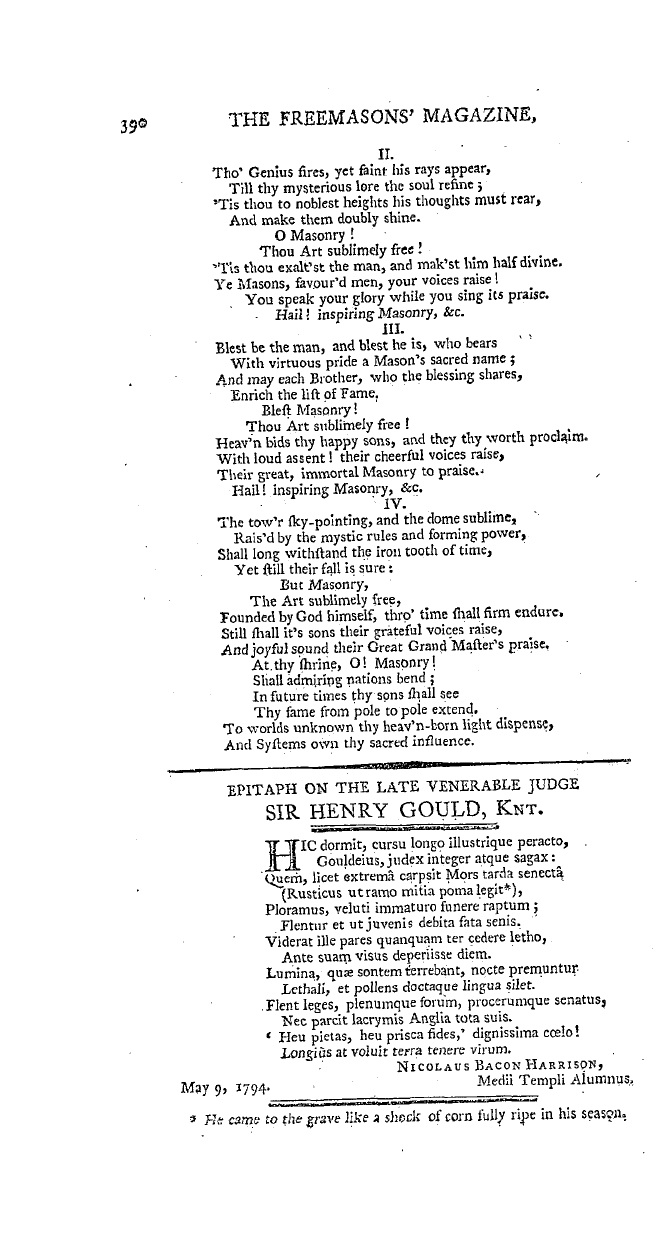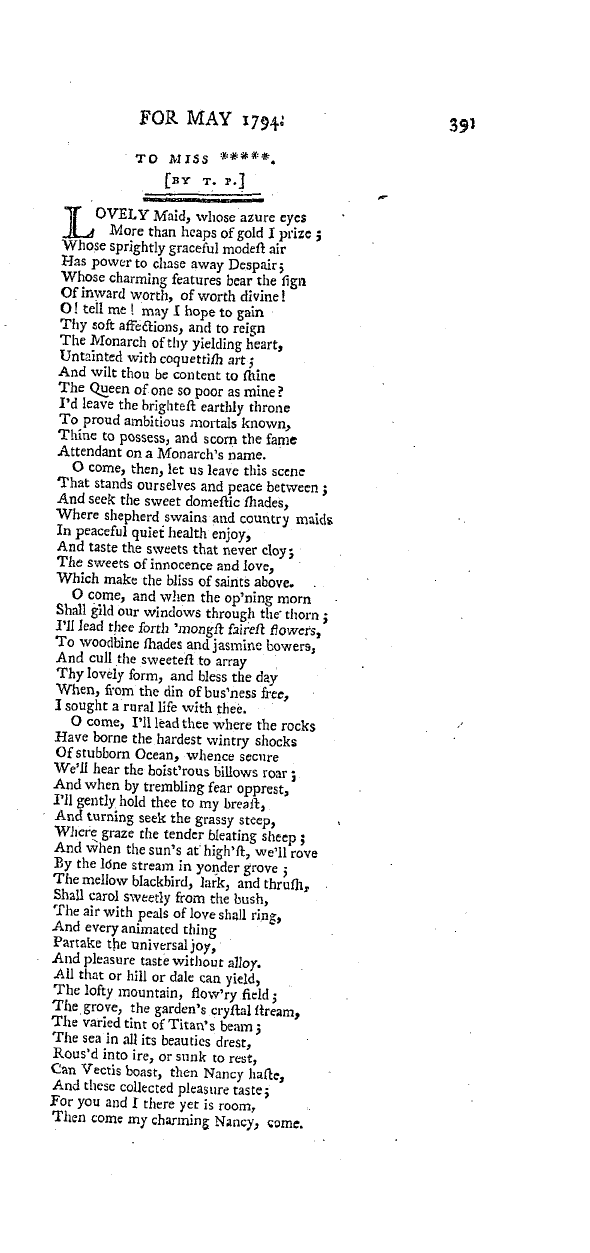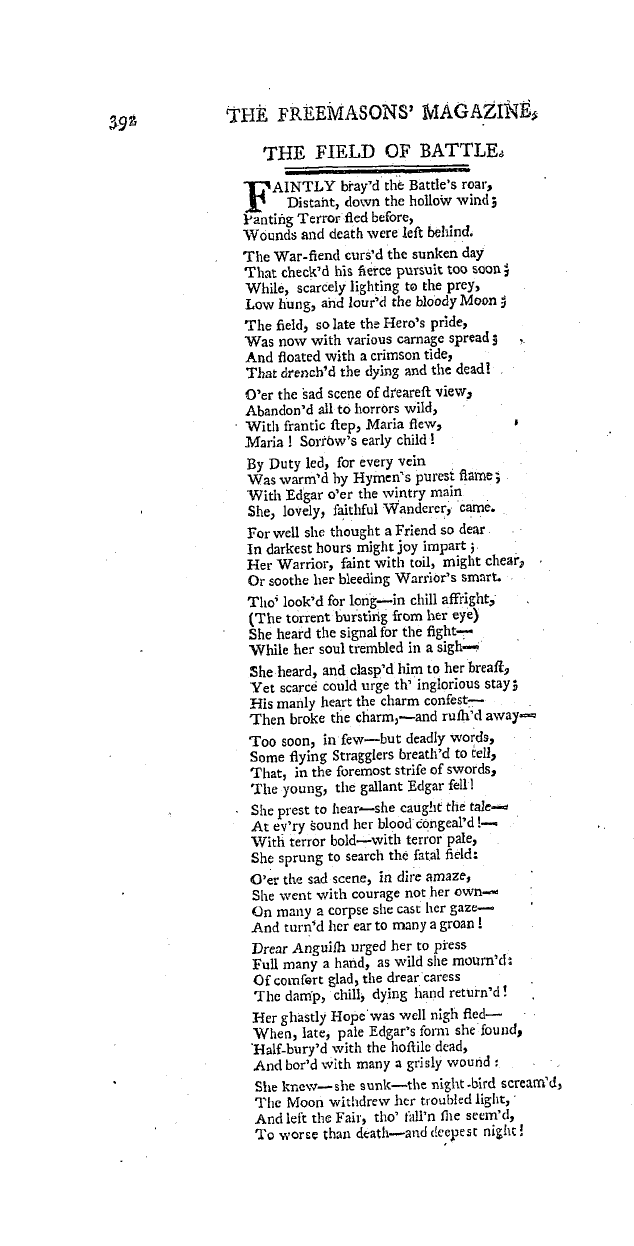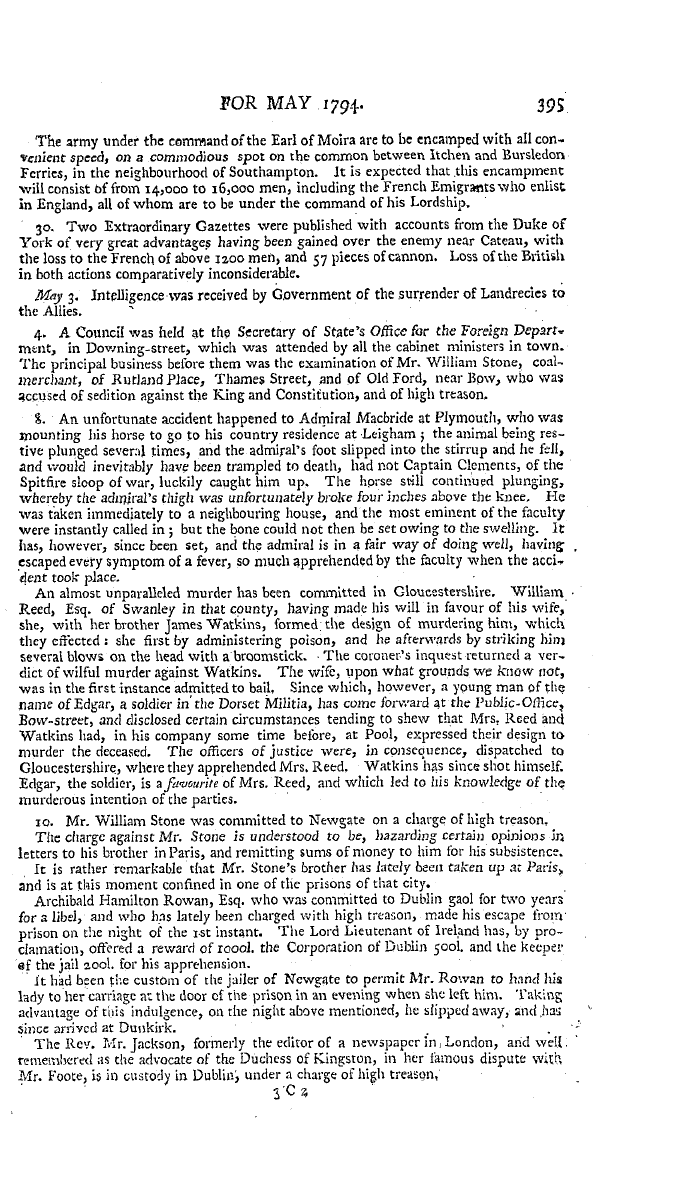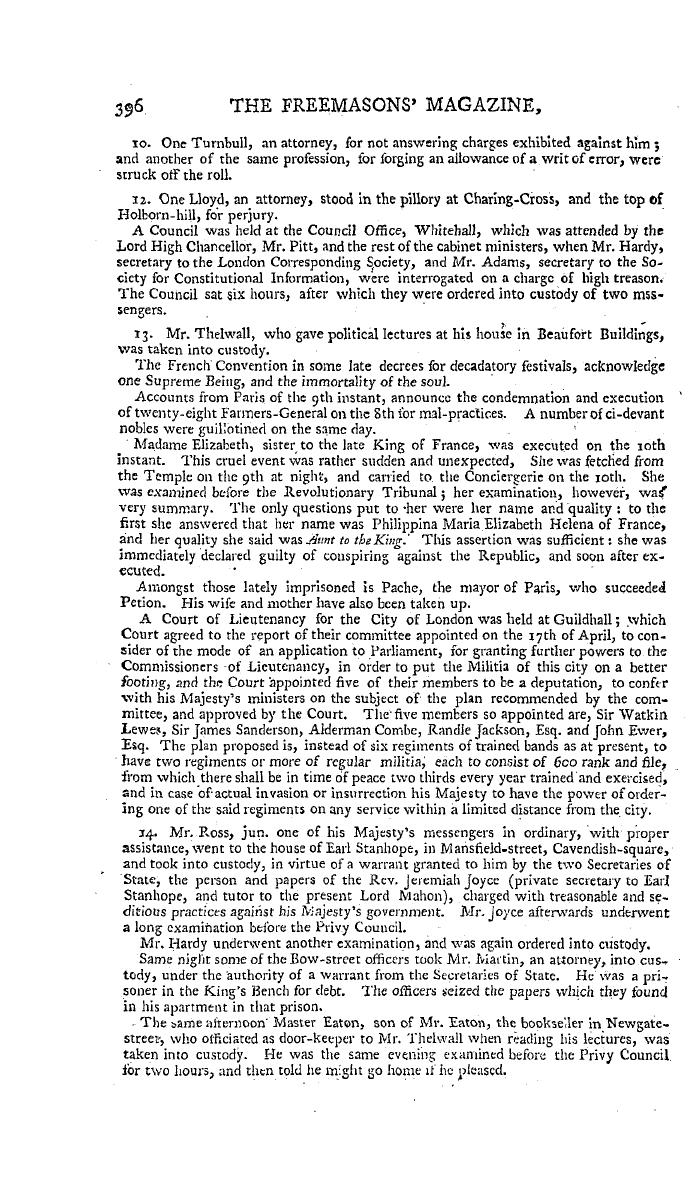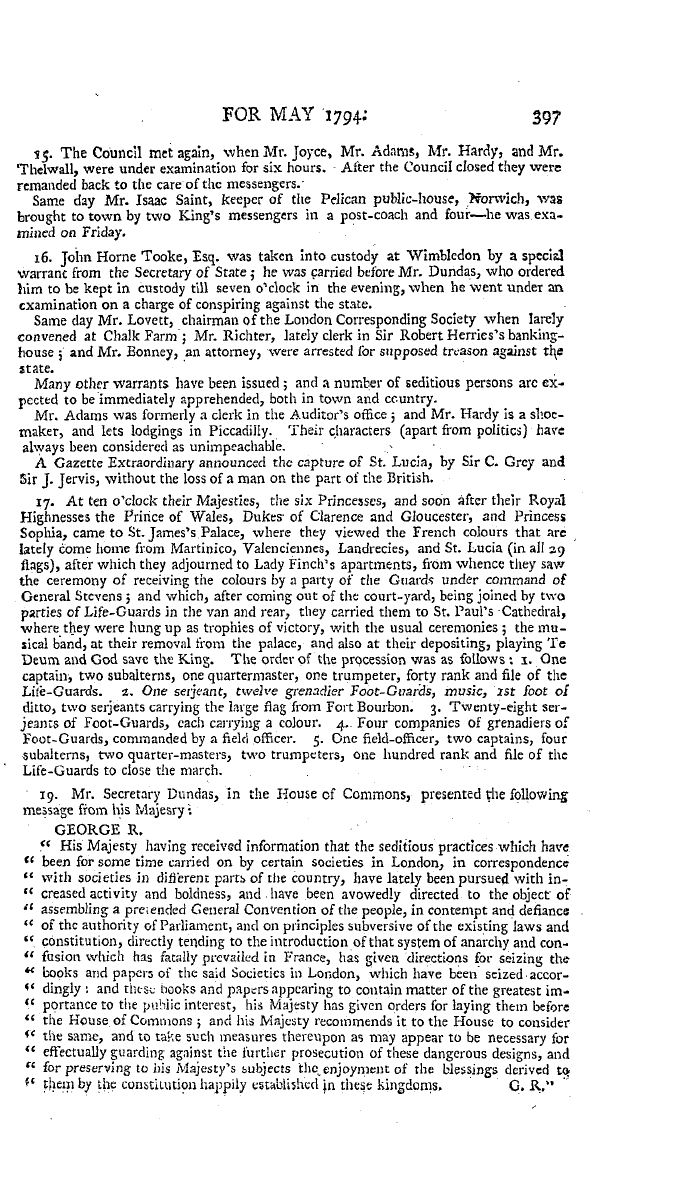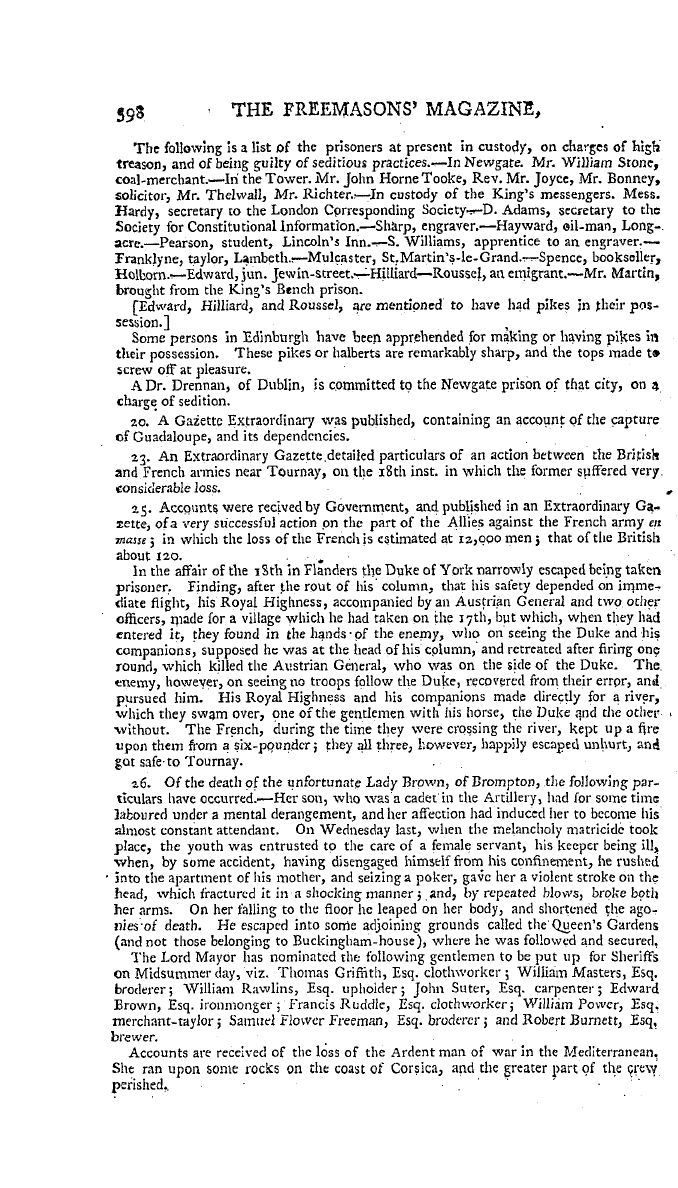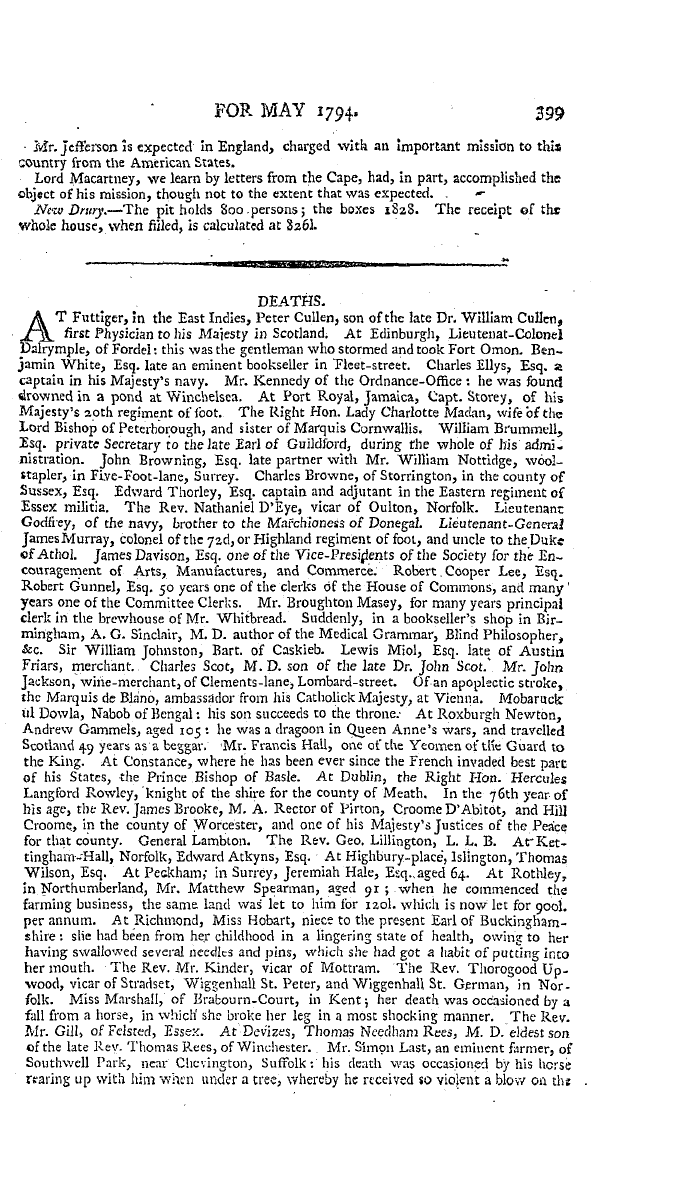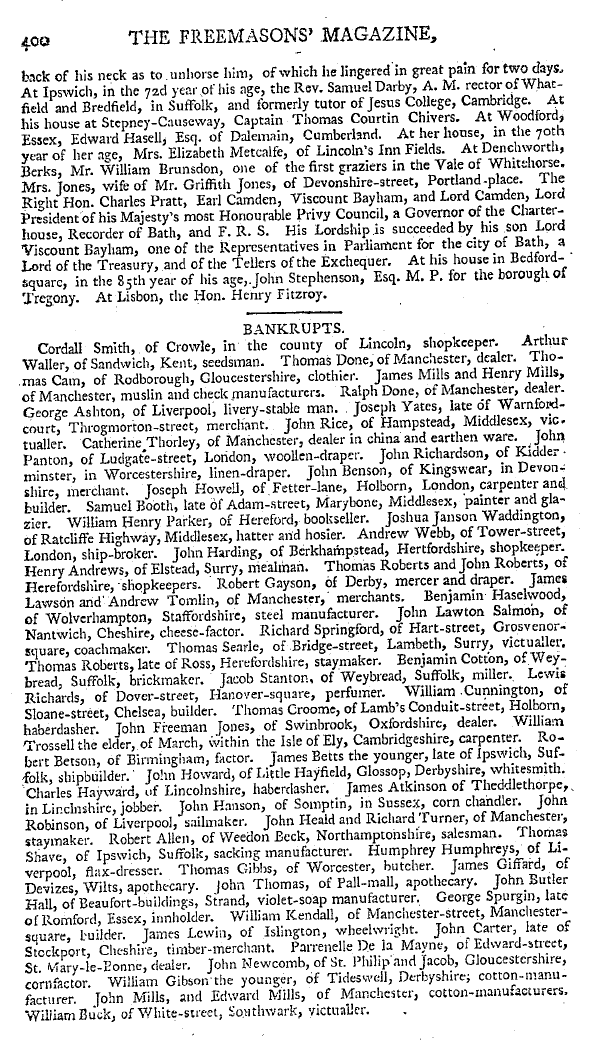-
Articles/Ads
Article AN ACCOUNT OF DRUIDISM. ← Page 7 of 8 →
Note: This text has been automatically extracted via Optical Character Recognition (OCR) software.
An Account Of Druidism.
their authority , either as prophets or judges , pretending that its motion was miraculous . In what consecrated p laces or temples these relig ious rites were celebrated , seems to be the next enquiry ; and it appears that they were , for the most part , celebrated in the midst of groves . The mysterious silence of an ancient wood diffuses even a shade of horror over minds
that are yet superior to superstitious credulity . The majestic gloom , therefore , of their consecrated oaks , must have impressed the less informed multitude with every sensation of awe that mig ht be necessary to the support of their religion and the dignity of the priesthood . The reli g ious wood was generally situated on the top of a hill or a mountain , where the Druids erected their fanes and their altars . The temple was
seldom any other than a rude circle of rock perpendicularly raised . An artificial p ile of large fiat stone in general composed the altar ; and the whole relig ious mountain was usually enclosed by a low mound , to prevent the intrusion of the profane . Among the primeval people of
the east , altars were inclosed by groves of trees , and these groves consisted of p lantations of oak . Abram passed through the land unto the p lace of Sichem—unto the oak of Moreh : and the Lord appeared unto Abram ; and there he builded an altar unto the Lord , who appeared unto him beside the oak of Moreh * . That particular places and temples in Danmonium were appropriated to particular deities is an unquestionable fact . Borlase tells usthat the old British appellation of
, the Cassiterides , or Scilly Islands , was Sulleh or Sylhh , which signifies rocks consecrated to the sun f . This answers to the temples of Iran . , which were dedicated to the sun and the planets : and the sacred ceremonies of Iran are represented by sculptures in the ruined city o £ Jemschid % ; and a number of places irr Danmonium still preserve , in their names , the lasting memorials of the British deities . In Ti-esadarn we
have the town or house of Saturn , in Nausadarn , the valley of Saturn ; and many of the enormous rocks which rise with peculiar grandeur in those wild p laces , were undoubtedly appropriated to the fire-worship of the .
Note: This text has been automatically extracted via Optical Character Recognition (OCR) software.
An Account Of Druidism.
their authority , either as prophets or judges , pretending that its motion was miraculous . In what consecrated p laces or temples these relig ious rites were celebrated , seems to be the next enquiry ; and it appears that they were , for the most part , celebrated in the midst of groves . The mysterious silence of an ancient wood diffuses even a shade of horror over minds
that are yet superior to superstitious credulity . The majestic gloom , therefore , of their consecrated oaks , must have impressed the less informed multitude with every sensation of awe that mig ht be necessary to the support of their religion and the dignity of the priesthood . The reli g ious wood was generally situated on the top of a hill or a mountain , where the Druids erected their fanes and their altars . The temple was
seldom any other than a rude circle of rock perpendicularly raised . An artificial p ile of large fiat stone in general composed the altar ; and the whole relig ious mountain was usually enclosed by a low mound , to prevent the intrusion of the profane . Among the primeval people of
the east , altars were inclosed by groves of trees , and these groves consisted of p lantations of oak . Abram passed through the land unto the p lace of Sichem—unto the oak of Moreh : and the Lord appeared unto Abram ; and there he builded an altar unto the Lord , who appeared unto him beside the oak of Moreh * . That particular places and temples in Danmonium were appropriated to particular deities is an unquestionable fact . Borlase tells usthat the old British appellation of
, the Cassiterides , or Scilly Islands , was Sulleh or Sylhh , which signifies rocks consecrated to the sun f . This answers to the temples of Iran . , which were dedicated to the sun and the planets : and the sacred ceremonies of Iran are represented by sculptures in the ruined city o £ Jemschid % ; and a number of places irr Danmonium still preserve , in their names , the lasting memorials of the British deities . In Ti-esadarn we
have the town or house of Saturn , in Nausadarn , the valley of Saturn ; and many of the enormous rocks which rise with peculiar grandeur in those wild p laces , were undoubtedly appropriated to the fire-worship of the .


























































